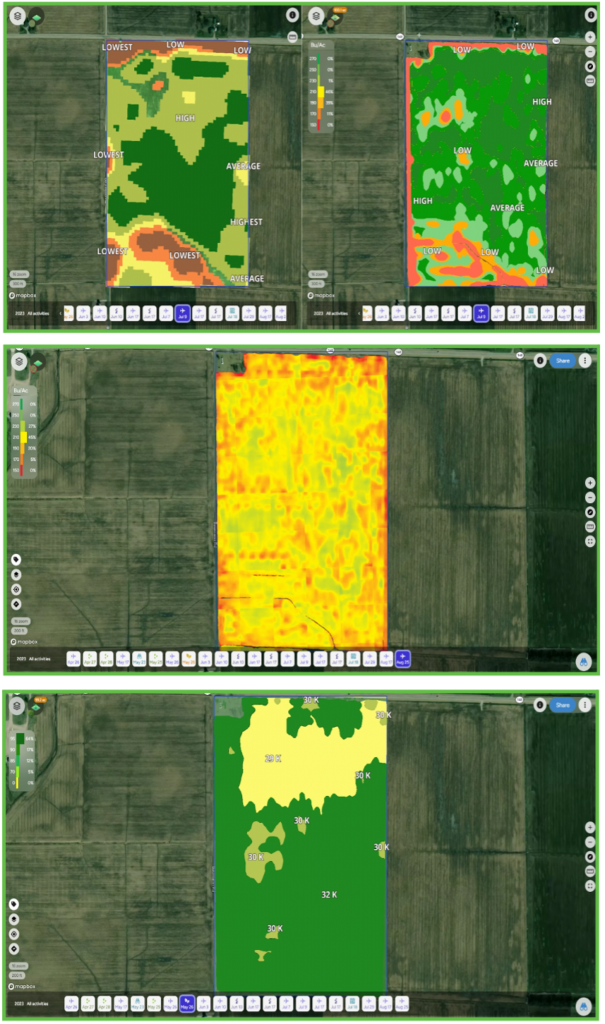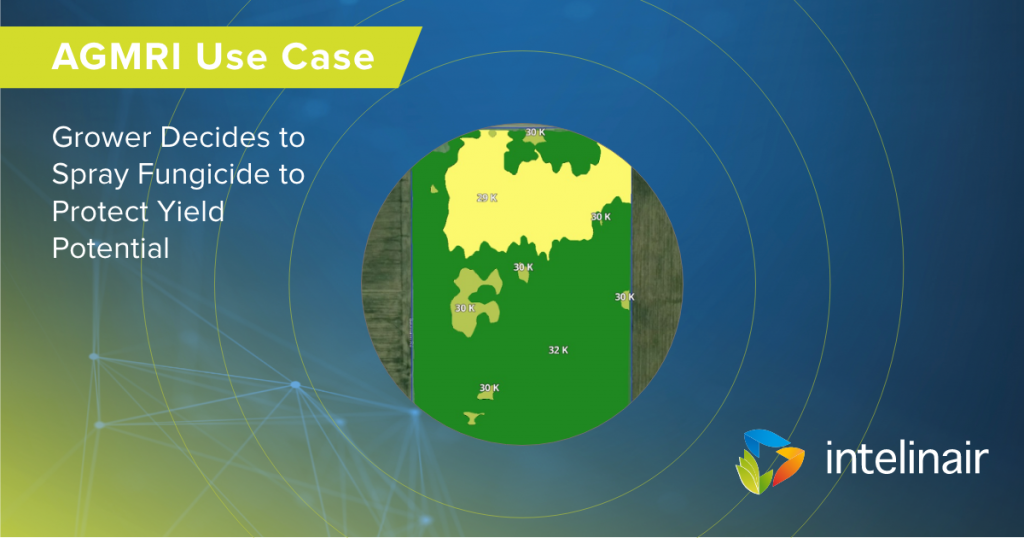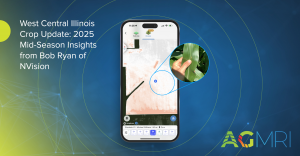Background
The grower in this case is a seasoned farmer with a history of cultivating this particular field. It was early in the season, and the field faced an emergence issue that initially prompted consideration of replanting. However, based on the emergence map analysis, it was decided to keep the existing crop. Nevertheless, the grower remained concerned about the field’s yield potential, especially as June brought minimal rainfall.
Challenge
The grower faced a critical decision during the fungicide application stage. Despite receiving an AGMRI disease alert for the field, it was initially excluded from the list of fields to receive fungicide treatment. The decision stemmed from the uneven and slow emergence observed earlier in the season, coupled with the lack of June rainfall. The grower was “on the fence” about whether to spray a fungicide or not, considering the potential yield loss if a disease outbreak occurred.
Solution
To address the challenge, the grower collaborated with a retail salesperson who utilized AGMRI’s data. They examined the historical and current field health data, making a detailed comparison. Despite the early-season setbacks, they noticed a significant portion of the field exhibited above-average performance on July 9 compared to historical data. Based on this analysis, the grower made the informed decision to apply fungicide to the field to protect the potential for higher yields.
Results
As a result of this decision, the field is on track to yield 215 bushels per acre, surpassing the historical average for this specific field. The grower expressed appreciation for AGMRI’s role in enabling an objective assessment of the situation and potential course of action. Moving forward, the grower plans to continue using AGMRI’s insights to make data-driven decisions that maximize productivity and efficiency on his farm.















